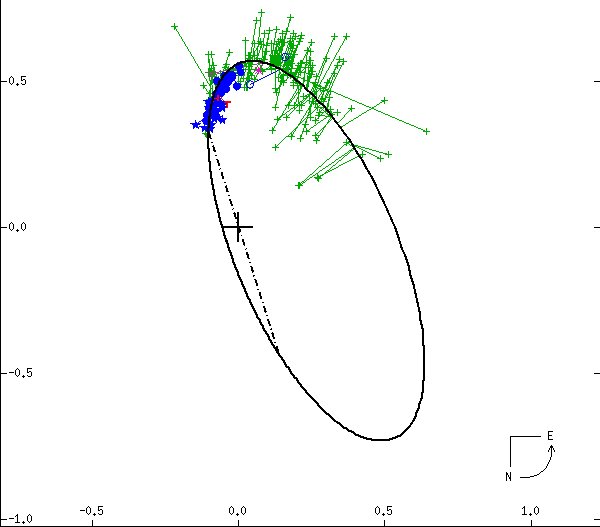 |
The B9 dwarf Lambda Cas B orbits the B8 dwarf Lambda Cas A on an
eccentric path that takes 536.5 years to complete, the two
averaging 135 AU (or less) apart. In reality, they both orbit a
common center of mass that lies between them. The orbital major
axis is severely offset from the apparent ellipse because of the
tilt and orientation of the orbital plane against the plane of the
sky. The scale is in seconds of arc. Note how close the stars are
to each other, which makes them difficult to separate. (W. I.
Hartkopf and B. D. Mason, Sixth Catalog of Orbits of Visual
Binary Stars, US Naval Observatory Double Star Catalog, 2006.)
|


